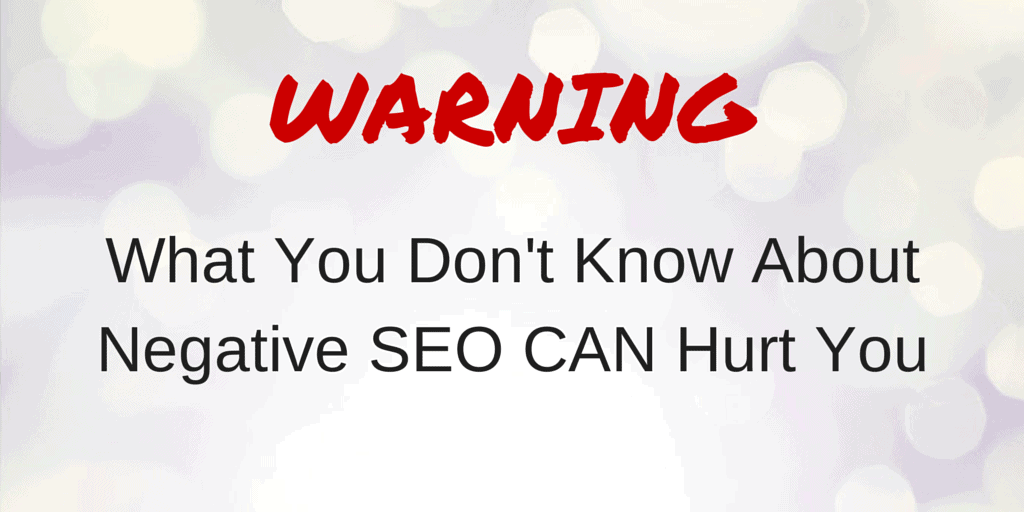The aim of this blog post is to educate our readers concerning the buzz on negative SEO, starting from what exactly it is, and the kind of threat it poses, to how to protect their websites from potential malicious activities.
Attempting to hurt a website’s ranking on Google’s search engine result pages is known as negative SEO. Currently, several different methods are available through which a site’s ranking can be hurt. Using spam links is the most common way to hurt a site’s ranking, though several other malicious techniques have been discovered.
Does It Work?
Google uses an algorithm called the PageRank, which ranks all websites based on their search engine results. On April 24th, Google released an update for their PageRank algorithm, called Google Penguin. The update was intended to mitigate black hat SEO techniques, which included artificially increasing the ranks through different link schemes. The update reduces the rankings of particular websites involved in violating the webmaster guidelines set by Google.
With this information, we are certain that websites involved in manipulative acts can be subject to penalty.
But if an unscrupulous third party creates artificial links, it can have a similar effect on the innocent site’s rankings.
Google, however, was adamant on their stance that negative SEO is very rare. A previous statement said that, “There is nothing a competitor can do to harm your ranking or have your site removed from our index.”
Which was later altered to, “There is almost nothing a competitor can do…”
A senior engineer from Google said that the act of creating negative SEO though spam links isn’t impossible but rather extremely difficult. Apparently, one cannot simply attack a website by attaching links to it, but rather by hacking onto the server to perform various nefarious acts.
Disavow Tool
In October 2012, Google announced a new tool called the Disavow Tool, which allows a webmaster to disavow certain links they feel can damage the site’s ranking. According to Google, most sites will not require the use of the tool. But companies can use the tool as a preventive measure.
According to Matt Cutts, a senior software engineer at Google, Google works hard to prevent competitors from eliminating rival websites through malicious means. Since assuming the algorithm to be absolute would be foolish, however, a website owner can further protect his or her website using the disavow tool on spam links individually.
Google has insisted website owners contact them in the case of effective negative SEO, but most of the reported cases ended up not being negative SEO.
Certain Examples which are not Negative SEO
1. A few websites exist which automatically link out to almost everything they can find. Examples of such websites are askives.com, m.biz, different directories, companies which analyze and provide information on domains, etc.
2. Several links created under a single keyword wouldn’t necessarily mean a negative SEO attack. A single sitewide link with hundreds of redirects appearing in the webmaster tools also wouldn’t mean an attack, especially if it’s from a reputable and known website.
3. Website owners who might have purchased a link-building package are subject to significant replication of links. Thus, these unnatural links are not something to get alarmed over, but should be wiped from the webmaster tools.
4. Individuals may hack their way into a site, not for the purpose of negative SEO, but rather to create web pages on a website with decent traffic and redirect it towards themselves. You can use Google Alerts to help determine if someone is trying to hack your website.
Potential Negative SEO Attacks
- An increasing number of links from completely unrelated and nonsense blogs
- Links for foreign domains, such as, cz, pl, ru, gb, com.br, etc.
- A huge inflow of links from the darker side of the internet, such as porn sites, loan sites, etc.
- A single sitewide link with thousands of redirects may not be an attack, even when coming from a questionable source. However, if those same sitewide links are coming in from multiple sources, it could be a potential negative SEO attack.
A lot of other sophisticated negative SEO techniques are also out there, but most website owners do not have probable cause for concern. But it’s important to keep a watchful eye on redirects from penalized websites.
Conclusion
If you outsource your SEO work, be sure to choose a well known and reputable business with expert knowledge on the matter. It is important that your online marketing partner understands the threat of negative SEO and is able to counter it. At Zen Media, we have the experience and expertise to help businesses protect their websites from malicious attacks such as these. Contact us today for more information about how we can help you keep your business safe.




